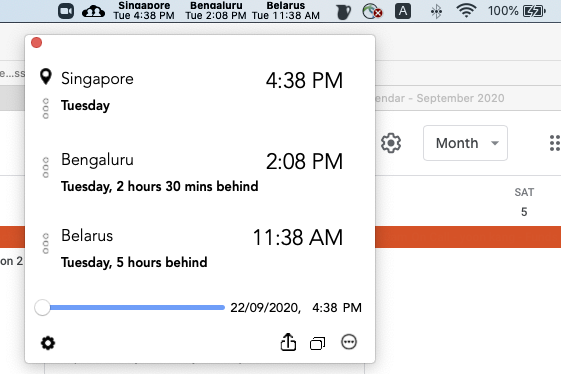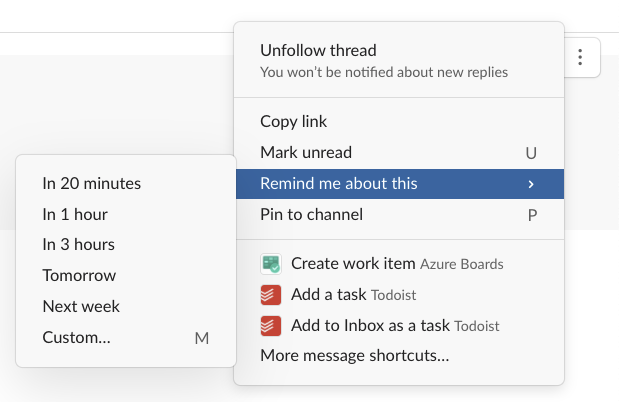The Advantages of Writing a Test Code
I uploaded a full request after modifying the code, but when I saw that the test failed, I searched for the parts that I missed and corrected them. That was when I really felt the value of testing. My team measures coverage as KPI. 20% of working hours allotted for technical assignments such as making tests, build time improvements, and modularizations. There is something I felt through the experience of writing and maintaining the test codes.
It makes you follow a better architecture
A code that is difficult to test is highly likely to have a poor structure. A testable code incorporates concerns about dependency. You need to strictly follow the dependency inversion principle as you manage and organize the dependency of the source code. Uncle Bob explains it well through the dependency rule.
Dogfooding My Codes
Once you make the test, you can experience the codes you’ve written as a user. It’s like building a house and decorating the interior and then coming out to check how it looks from the outside. Checking what the window looks like, how to open the door, and where the entrance is. The window and the entrance are the same as the public API. The interior of the house is the private elements. We use the public API to check object actions in a test. We try generating an object ourselves, configuring them, calling a public method, or approaching the properties. By doing that, you can check the usability of the codes that you’ve written. If the API is sloppy, it’s difficult and painful to make a test. You may face situations where you may get thoughts like, ‘do I have to test this?’ or ‘why is this case so difficult to test?’. Therefore, you have no choice but to pay attention to the usability of the API, and if you pay attention, you can create a simpler and more intuitive API. Being simpler has several meanings, but I think the fact that there are a few public methods or properties is especially important.
A Simple and Intuitive API Design
Developing a feature → Making a test → Modifying the feature → Modifying the test. If you keep repeating the above process, it’s like growing muscles that can draw a big picture in advance within the designing stage of creating an API. For example, there are cases when the existing tests all need to be discarded and written all over again after some feature modifications. If that’s the case, it’s highly likely that the design was bad from the beginning. Publicly disclose the things that are related to policy, which do not change easily, and the detailed implementations need to be hidden or moved to the outside. If the design goes wrong, it would be impossible to make a test, or if it’s made, it’s going to be a pain to maintain it. If this happens repeatedly, we have no choice but to consider the structure, role, and testability of the object. It makes you think about what to put in this object, what to take out, and how to add dependencies. If you’re having trouble thinking about how to design a code or judging which pattern is better, it seems like a good choice to use the test codes as a standard.
Increase the team’s ability to create and maintain meaningful tests
Unfortunately, it’s not like you can just make a test code one day because you want to. There needs to be a code structure and an environment where you can make a test. Therefore, you need to introduce and maintain an architecture that can create a test. It’s too difficult to create a test on Apple’s MVC. There is a problem where a user action event cannot occur without creating a UI. Also, testing is difficult in ViewContoller because the lifecycle-related method is complex and there are too many of them. It’s also not simple to inject dependency. So architectures like MVVM, VIPER, RIBS, etc. were created. However, introducing architecture is not the end. Architectures are not silver bullets, so they constantly change depending on the problems that need to be solved and the situations the team is placed in. Therefore, technical leadership that maintains a structure where testing is possible over time, and testing is not difficult but interesting is important. Also, teamwork which builds an environment that doesn’t make testing feel difficult and maintains the level of productivity, and introduces or makes appropriate tools is important.
Tags: tests
다른 표준시간대 다국적 개발팀에서 원격으로 일하는 법
우리팀은 모바일 개발자 9명으로 이뤄져있고 출신국이 정말 다양하다. 대한민국, 중국, 인도, 벨라루스, 이탈리아, 방글라데시 6개 국가에서 모였는데 비슷한 규모의 팀 중 사내에서도 손에 꼽히는 다양성인 것 같다. 원래는 모두 싱가폴이 근무지인데, 코로나로 인해 국가간 여행이 제한되기 직전 모국으로 휴가를 갔던 동료들이 여태 돌아오지 못했다. 그래서 팀원 두 명은 인도와 벨라루스에서 재택 근무를 하고 있다. 애초에 싱가폴 직원은 전부 재택 근무 중이기 때문에 크게 다를바가 없어 보였지만 시간대가 다르기 때문에 업무 방식에 변화가 생길 수 밖에 없었다. 생전 처음 원격으로 근무하랴, 시간대가 다른 팀원들과 협업하랴 정신없이 보내다가 이제 어느정도 안정적인 업무 방식을 찾은거 같다.
1. 시차 고려해서 메시지 보내기
미팅 시간을 잡을 때는 당연히 시차를 고려하게 된다. 두 시간 반 느린 인도 지사에 개발자가 많이 있기 때문에 평소에도 미팅은 오후에만 잡는 것이 생활화 돼있었다. 하지만 몇 달 업무를 해보니 채팅도 시차에 맞춰서 보내는 편이 좋다는걸 알게됐다. 처음에는 ‘메시지 보내놓으면 출근해서 보고 답장을 주겠지’ 라고 생각하고 내 편의에 맞춰 메시지를 보냈다. 그러다보니 상대방이 답장을 안주면 나도 잊어버리고 나중에 메시지를 다시 보내야하는 일이 잦았다.
생각해보니 나같은 사람이 많다면 메시지를 받는 사람 입장에서는 출근하자마자 메시지가 많이 와있을테고, 묻히는 메시지가 생겼을 것이다. 이제는 상대방 업무 시간에 맞춰서 메시지를 보낸다. 그랬더니 답장을 더 빨리, 확실하게 받을 수 있게 됐다. 이걸 잘하기 위해 쓰고 있는 도구가 두 개 있는데 하나는 맥 상태바에 여러 시간을 볼 수 있는 간단한 앱이고 다른 하나는 슬랙 리마인드 기능이다. 슬랙에서 특정 메시지에 알람을 걸어놓을 수 있어서 상대방 출근시간 즈음 맞춰놓으면 까먹지 않고 관련 내용을 참고해서 메시지를 보낼 수 있다.
👇 상태바에 여러 시간 표시해주는 맥 앱. 인도와 두시간 반, 벨라루스와 다섯 시간 시차가 있다.

👇 슬랙에 있는 메시지 리마인더 기능

2. 팀원 출근시간 전에 코드리뷰 남기기
서로의 업무에 가장 직접적으로 영향을 주는게 코드리뷰다. 일정 인원의 승인을 받아야만 마스터 브랜치에 병합할 수 있고 CI 작업이 두시간이나 걸리기 때문에 MR을 올리고 코드 리뷰를 받고 수정하고 승인을 받고 병합하는데에만 최소 반나절, 길게는 2~3일이 걸리기도 한다. 시차가 5시간인 벨라루스에서 일하는 팀원과 리뷰를 주고 받을때 특히 신경써야 했다. 리뷰가 늦어지면 코드 병합이 하루 이틀 더 늦어지기 십상이었다. 예를 들어 내가 오후 느지막이 리뷰를 남기고 퇴근을 하면 벨라루스 팀원은 댓글을 보고 코드를 수정하거나 아니면 의견을 댓글로 남긴다. 내 시각으론 밤 늦게거나 새벽이라 다음날이 돼야 확인할 수 있다. 그런데 내가 다음날에도 퇴근 직전에 MR을 검토하면 팀원의 두번째 응답은 또 그 다음날 확인할 수 밖에 없다. 이렇게 댓글이 한 두번만 오고가도 이틀이 지나가버린다.
그래서 이제는 출근하면 가장 먼저 MR부터 확인한다. 내가 아침에 의견을 남겨 놓고 다른 일을 하다보면 오후에 팀원이 출근해서 확인하고, 당일에 한번 더 대화가 오고갈 수 있다. 합의가 빠르면 승인까지 할 수 있고 그날 병합을 할 수도 있다. 단지 서너 시간의 차이로 코드 병합이 하루 단위로 늦춰질 수 있다는걸 생각하면 업무 순서를 조정하는건 쉬운 일이다. 의식적으로 하다보니 습관이 들었다.
3. 1대1 또는 소규모 통화 하기
원격 근무를 하면 의사 소통이 예전만큼 활발하지 않다. 옆자리에 있었더라면 쉽게 대화를 시작했을 텐데 이제는 대답을 기다려야 해서 간단한 대화나 잡담이 힘들다. 그런데 소소한 대화의 중요성을 요즘 부쩍 느끼고 있다. 동료와 친밀감을 쌓을수도 있고 개인 업무에 직접적인 도움을 받기도 하고, 외국 생활에 필요한 정보를 주고 받기도 한다. 원격 근무 때문에 대화도 의도적으로 하지 않으면 교류가 너무 없다. 보통 줌 미팅에 들어가면 사람들이 다 모이기 전까지 시간이 약간 빈다. 자투리 시간에라도 인사를 나누고 근황을 묻는다.
별도로 시간을 마련하면 더 좋다. 최근에 큰 프로젝트를 끝낸 후 그 동안 배운 것들을 정리하고 팀의 지식으로 남길겸 문서를 만들었고, 팀원들에게 앞으로의 방향을 제안하고 아이디어를 공유하는 시간을 두어 번 가졌다. 긴 시간은 아니었지만 다른 팀원들의 의견을 다양하게 들어볼 수 있었고, 무엇보다 미팅 이후에도 관련 주제로 기술적인 논의가 계속 이어지는 것을 봤다. 그리고 업무 미팅과 달리 정보 공유차 부담없이 모이면 다양한 얘기가 오고간다. 그러는 와중에 새로운 주제가 떠오르기도 했고 서로의 문제를 해결해주기도 했다.
원격 근무하는 현 상황은 주니어 개발자에게는 특히 더 어려운 시기같다. 쉽게 도움을 요청할 수 있는 사람이 옆에 없어서 힘들 것 같다. 기회가 있을때 1대1 통화로 도움을 주고는 있지만, 예전보다는 많이 부족하지 않나 싶다. 주니어 개발자라면 더 적극적으로 도움을 요청하고, 시간을 잡아서 통화를 하는 등의 노력을 해서 다른 개발자들과 접촉을 더 늘려야 할 것 같다.
앞으로
우리팀 사무실의 임대차 계약이 만료됐는데 연장을 안했다고 한다. 아무래도 내년 중순 쯤 완공될 사옥에 입주하기 전까지 이런 근무 형태가 계속될 예정이다. 코로나로 인한 여행 제한, 이동 제한, 만남 제한 때문에 여러모로 힘들고 업무 방식도 급변해서 쉽지 않지만 이런 상황 속에서 더 행복하고 지속 가능하게 일할 수 있는 방법이 뭘까 계속 고민하게 된다.
Tags: WFH, multinational, multi-timezone, collaboration
개발자와 라면 조리법
라면 봉지 뒷면에 써있는 조리법을 한번 들여다보자.

(1) 물 550ml와 건더기 스프를 넣고 물을 끓인다.
(2) 분말 스프와 면을 넣은 후 4분 더 끓인다.
3번은 먹는 방법에 대한 권장사항이니 제외하면 두 단계라고 볼 수 있다. 근데 실제로 라면을 끓이는 자신의 모습을 상상해보면 이보다 훨씬 많은 단계들이 숨어있다.
(1) 냄비를 꺼낸다.
(2) 냄비에 물 550ml와 건더기 스프를 넣는다.
(3) 물과 재료가 담긴 냄비를 가열한다.
(4) 물이 끓기를 기다린다.
(5) 물이 끓기 시작하면 면과 분말 스프를 넣는다.
(6) 4분 더 끓인다.
(7) 불을 끈다.
(8) 그릇에 옮겨 담는다.
이보다 더 자세하게 서술할 수도 있다. 들여다보면 ‘냄비를 가열한다’에도 여러 단계가 생략돼있다. 심지어 장비에 따라서도 다르기 때문에 분기가 필요하다.
(1) 인덕션이라면 전원을 켜고 버튼을 눌러 온도를 높인다.
(2) 가스레인지라면 가스밸브를 열고 다이얼을 돌려 점화한다.
(3) 휴대용 버너라면 가스통을 흔들어 넣고, 잠그고, 점화한다.
하지만 그 어떤 라면 조리법에도 위 같은 내용이 포함되진 않는다. 왜냐면 이정도 상세한 내용은 독자가 이미 알고 있다고 간주하거나, 실은 라면 회사가 알 바 아니기 때문이다. 너무 당연한 말이라고 생각할 수도 있겠지만 이런 류의 코드는 꽤 흔하다. 함수 이름에 표현된 것보다 더 많은 일을 하거나 지나치게 세부적인 구현부가 드러나기도 한다. 이런 경우 보통 if문, for문이 많고 코드가 장황하다.
가령 fetchRecentArticles 라는 함수를 마주쳤다고 상상해보자. 이 함수가 수행하는 작업은 아래와 같다고 예상할 수 있다.
(1) 저장된 아티클을 적당히 불러온다.
(2) 최근 X일 내에 생성된 것들을 골라낸 후 반환한다.
그런데 막상 함수를 들여다보니 함수 안에서 로컬 캐시를 확인하고, 없으면 서버 API 호출을 해서 데이터를 가져와서 파싱하고, 저장소에서 데이터를 불러오기 위한 키 값도 정의하고, switch문으로 아티클의 종류에 따라 각기 다른 필터링 로직을 생성하고 있다면 어떨까. 막상 핵심 부분은 장황한 코드 속에 파묻히게 된다. 코드를 수정하려고 해도 어디를 건드려야할지 한참을 찾아야한다. 라면 물을 끓인다는 것만 알면 되는데 불을 어떻게 지펴야 하는지까지 설명하고 있는 셈이다.
‘왜 자석은 서로 밀어내는가?’란 기자의 질문에 리처드 파인만이 대답을 한 영상에서도 비슷한 의미를 찾을 수 있다. 같은 질문이라도 질문자가 누구냐(물리학 전공자, 일반인, 외계인 등)에 따라, 또는 질문자가 무엇을 알고 싶어하느냐에 따라 설명은 천차만별이 된다. ‘그건 그냥 그런거야’와 같이 한마디 답변이 될 수도 있고, 설명이 꼬리에 꼬리를 물고 끝도 없이 자세하게 설명할 수도 있다.
본인이 쓴 코드가 적절한 수준의 로직만 드러내고 있는지 고민해보자. 함수의 역할에 맞는 작업만 하고 있는지, 아니면 온갖 세부 로직을 장황하게 늘어놓고 있는게 아닌지 살펴보고 손봐야 한다. 그런데 ‘적절한 수준’이란 것엔 정답이 없다. 코드가 속해있는 클래스나 모듈에 따라 다르다. 코드를 읽는/쓰는 사람의 역량에 따라서도 달라질 수 있다. 누구에게는 간결한 코드가 누구에게는 더 이해하기 어려운 코드일 수 있다. 코드를 리팩토링 하다보면 또 기준이 바뀔 수도 있다. 모든게 유동적이다. 딱 떨어지는 기준은 없지만 독자의 입장에서 자신의 코드를 한번이라도 더 읽어보고, 함수를 짧게 만드는 연습을 하고, 동료끼리 코드 리뷰를 하면서 적절한 수준으로 맞춰갈 수 있다.
객체는 하나의 책임만 가져야 한다는 단일 책임 원칙을 지키는게 결코 쉽지는 않지만 함수 단위에서부터 시작해보자. 함수를 간결하게 만들수 있게 됐다면 다음으로 클래스 수준에서도 적용해본다. 단일 책임 원칙은 모든 패턴이나 아키텍처의 시작이다. 즉 단일 책임 원칙을 지키지 못하면 어떤 패턴을 쓰던, 어떤 아키텍처를 도입하던 시간이 흐를수록 결국 스파게티 코드가 될 확률이 높다. 언어 문법도 코드를 더 간결하게 표현하기 위한 수단으로써 공부를 하면 길을 잃지 않을 수 있다. 함수를 짧게 만들고 클래스를 작게 만드는 연습을 많이 하자.
같이 읽어볼만한 글
스위프트로 다시보는 객체지향 프로그래밍: 피해야할 코딩 습관